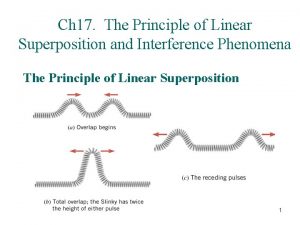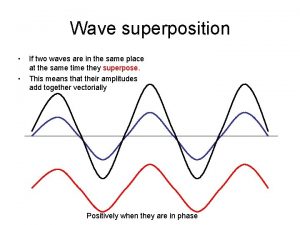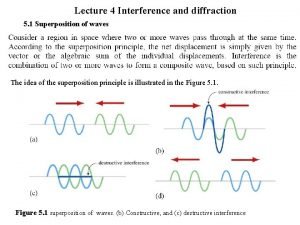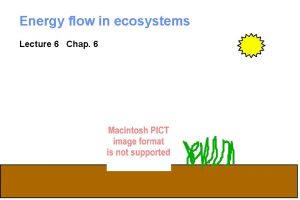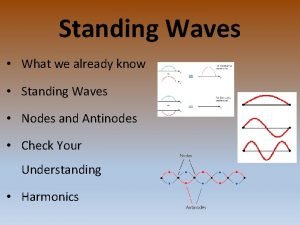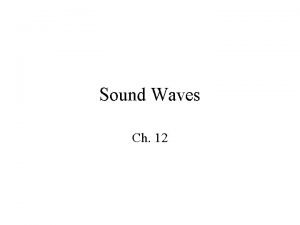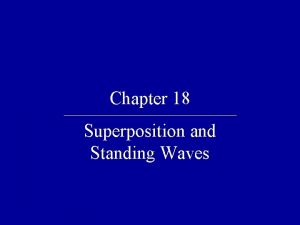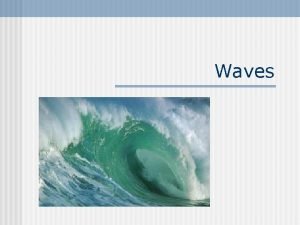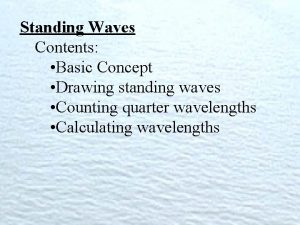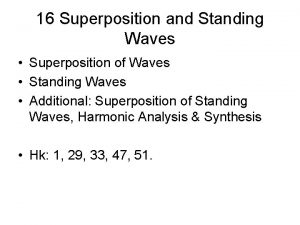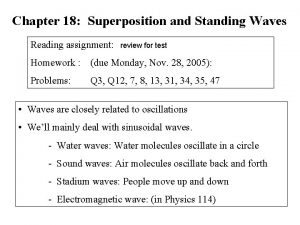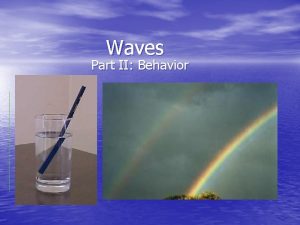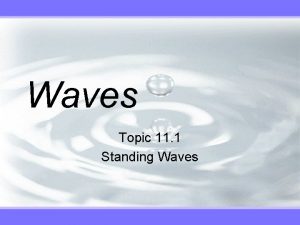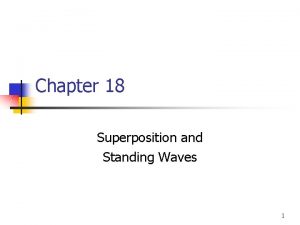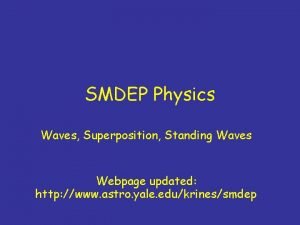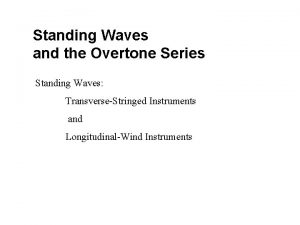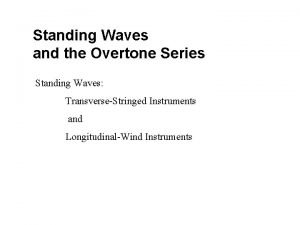Chapter 18 Superposition and Standing Waves Reading assignment












- Slides: 12

Chapter 18: Superposition and Standing Waves Reading assignment: Chapter 18. 5 -18. 8 Homework : (due Wednesday, Nov. 16, 2006): Problems: Q 3, Q 12, 7, 8, 13, 31, 34, 35, 47 • Waves are closely related to oscillations • We’ll mainly deal with sinusoidal waves. - Water waves: Water molecules oscillate in a circle - Sound waves: Air molecules oscillate back and forth - Stadium waves: People move up and down - Electromagnetic wave: (in Physics 114)

Superposition and interference • If two traveling waves are moving through a medium, the resultant wave function is the algebraic sum of the wave functions of the individual waves. • Two traveling waves can pass through each other • When waves meet we can get constructive or destructive interference Constructive interference Destructive interference

Black board example 17. 3 Constructive interference Two pulses are traveling toward each other at 10 cm/s on a long string as shown. Sketch the shape of the string at time t = 0. 6 s.

Superposition principle If two (or more) waves move in the same linear medium, the net resulting wave is equal to the algebraic sum of the two (or more) individual waves.

Superposition of two sinusoidal waves with the same wavevector, k, and angular frequency, w. One wave is shifted with respect to the other by a phase constant F. Resultant wave:

Resultant wave: Constructive interference (Amplitude of resultant wave is 2 A): (The waves are in phase) cos (F/2) = 1 Thus F = 0, 2 p, 4 p, 6 p, … Wave 1 and 2 Resultant wave

Resultant wave: Destructive interference (Amplitude of resultant wave is 0): (The waves are out of phase) cos (F/2) = 0 Thus F = p, 3 p, 5 p, … Wave 1 Wave 2 Resultant wave

Resultant wave: Interference with a random phase constant F: Waves just add up Wave 1 Wave 2 Resultant wave

Reflection of a traveling wave on rigid wall - If a wave encounters a “denser”, new medium, or a rigid wall, it gets reflected. - In this case the reflected pulse is inverted upon reflection

Reflection of a traveling wave on a loose end - If a wave encounters a “less dense” medium or an end it also gets reflected. - In this case the reflected pulse is not inverted upon reflection.

Transmission: Light string heavier string The transmitted pulse is not inverted. The reflected pulse is inverted.

Transmission: Heavy string light sting The transmitted pulse is not inverted. The reflected pulse is not inverted.
 The principle of linear superposition
The principle of linear superposition Principle of superposition waves
Principle of superposition waves Superposition of waves
Superposition of waves Difference between standing crop and standing state
Difference between standing crop and standing state Transverse standing waves
Transverse standing waves Travelling and standing waves on a string
Travelling and standing waves on a string Compare and contrast p waves and s waves using venn diagram
Compare and contrast p waves and s waves using venn diagram Pre reading while reading and post reading activities
Pre reading while reading and post reading activities Sonic spectrum definition
Sonic spectrum definition Standing waves quiz
Standing waves quiz Standing waves
Standing waves Draw a picture of standing waves with n=3
Draw a picture of standing waves with n=3 Similarities of mechanical and electromagnetic waves
Similarities of mechanical and electromagnetic waves
